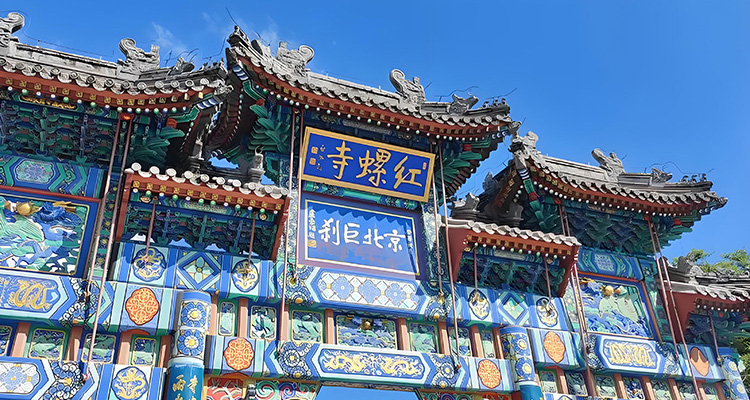Hongluo Temple: Beijing’s Hidden Buddhist Gem
1. Introduction to Hongluo Temple
Nestled in the serene Huairou District of Beijing, Hongluo Temple stands as a testament to China’s rich Buddhist heritage. With a history spanning over 1,600 years, this temple offers visitors a glimpse into ancient architectural marvels and spiritual practices.

2. Historical Significance
Established during the Eastern Jin Dynasty in 338 AD, Hongluo Temple has undergone numerous renovations, especially during the Ming and Qing dynasties. Emperors Kangxi and Qianlong visited the temple, contributing to its prominence in Chinese Buddhism.

3. Architectural Wonders
The temple complex features traditional Chinese architecture, including the Mountain Gate, Heavenly King Hall, and the Main Hall. Each structure is adorned with intricate carvings and inscriptions, reflecting the artistic achievements of their respective eras.

4. Sacred Sites Within the Temple
- Imperial Bamboo Grove: Planted by Zen Master Yunshan during the Yuan Dynasty, this grove is renowned for its tall, dense bamboo, creating a tranquil atmosphere.
- Male and Female Ginkgo Trees: These ancient trees, over a millennium old, stand as symbols of harmony and longevity.
- Wisteria-Clad Pine Tree: A unique sight where wisteria vines intertwine with a pine tree, showcasing nature’s resilience and beauty.

5. Spiritual Practices and Offerings
Visitors can engage in various spiritual activities, such as incense offerings, bell ringing for blessings, and tying red ribbons on trees to wish for good fortune. These practices provide a deeper connection to the temple’s spiritual ambiance.

6. Visiting Hongluo Temple
- Opening Hours: 8:30 AM – 5:30 PM (Last entry at 4:00 PM)
- Admission Fee: 54 RMB
- Location: No. 2 Hongluo East Road, Huairou District, Beijing
- Transportation: Accessible via public buses from Dongzhimen Station or by private car.

7. Best Time to Visit
The temple offers unique experiences throughout the year:
- Spring: Witness blooming flowers and rejuvenated landscapes.
- Summer: Enjoy the cool shade provided by ancient trees.
- Autumn: Admire the golden hues of ginkgo leaves.
- Winter: Experience the serene beauty of snow-covered grounds.

8. Cultural Etiquette for Visitors
To respect the temple’s sanctity:
- Dress Modestly: Avoid revealing clothing.
- Maintain Silence: Keep noise to a minimum to preserve the peaceful environment.
- Respect Traditions: Follow local customs and guidelines provided by temple staff.
Note: For the most accurate and up-to-date information, it’s recommended to check official sources or contact the temple directly before planning your visit.


